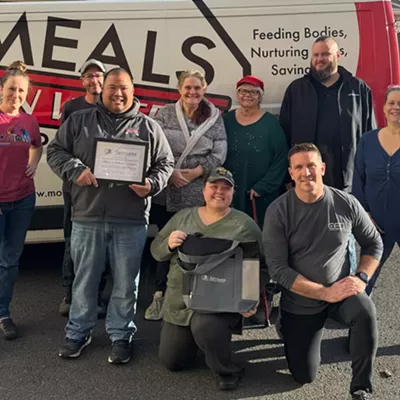What's in a name?
Which is it — COVID-19 or coronavirus? Here's the deal: COVID-19 is the illness associated with the coronavirus (technically known as the SARS-CoV-2).
It's not alive, but it's not dead
While the coronavirus is not "alive," it is resilient and it can remain infectious just sitting around on various surfaces: four hours on copper, 24 hours on cardboard, up to three days on plastic and stainless steel.
Studies are also showing the virus can also remain in the air for up to three hours, though most of the time it falls to the ground more quickly.
Wiping down purchased items or anything you are bringing into your home with a disinfecting wipe to reduce chances of contact with a left-behind virus is not a bad idea.
Show me the signs
According to the WHO, symptoms of COVID-19 can appear at any time from one to 14 days after exposure to the virus. During that time, the person may unknowingly be spreading the virus.
When symptoms do develop, they can vary widely. About 15 percent of patients who test positive will suffer severe health problems, while some people who test positive report no symptoms. Most people who test positive do report fever or respiratory symptoms.
But other less-obvious symptoms are slowly becoming apparent. In one study of 204 patients, half of the patients reported symptoms such as loss of appetite, diarrhea, vomiting or abdominal pain. "Digestive symptoms, such as diarrhea, may among the presenting features of COVID-19, in some cases may arise before respiratory symptoms, and on rare occasions is the only presenting symptom of COVID-19," according to a study released by the American Journal of Gastroenterology.
Loss of the senses of smell and taste is also emerging as a significant indicator of infection. Loss of smell or taste has been reported by people who have tested positive but otherwise have no other symptoms, according to the American Academy of Otolaryngology. They recommend anyone experiencing those symptoms self-quarantine.
Can I get a test and how long will it take?
At press time, drive-thru testing was ongoing at the Spokane County Interstate Fairgrounds. If you are experiencing symptoms of fever and a cough, the Spokane Regional Health District asks that you contact a screener via phone or virtual visit prior to going to the drive-thru test center. Testing is open from 10 am-8 pm, 7 days a week until further notice, based on resources.
Most tests done in Washington are being sent to the lab at the University of Washington. They have to be physically transported to the lab and put in the queue. The test itself takes some time to run and that all means that getting results back to doctors and patients has been taking several days.
Despite persistent rumors, there is no test kit that is approved for at-home, DIY testing. Efforts are underway to bring blood tests that just involve a fingerstick that could offer a rapid response, as well as reduce the need for supplies related to the current nasal and/or throat swab testing procedure.
A new test that takes just 45 minutes for results has been approved by the FDA but is not widely available to the public.
Whew! The test was negative!
Though false-positive tests are extremely rare (i.e., the test shows you have coronavirus when in fact you do not), false negatives (the test shows you don't have the virus when in fact you do) are a different issue. Several factors can complicate testing, including the testers' ability to access the remote part of the throat in "twitchy" test subjects. Variations in the amount of virus present can also be a factor. Some patients are testing positive, then negative, then positive again.
According to the FDA, "A negative result does not rule out COVID-19 and should not be used as the sole basis for treatment or patient management decisions. A negative result does not exclude the possibility of COVID-19."
All of which illustrates, yet again, the importance of social distancing.
Treatment
There is no FDA-approved treatment as of press time. There are four treatments under clinical investigation by the World Health Organization as part of a large global trial called SOLIDARITY. One treatment is an antiviral medication called remdesivir; one treatment involves a pair of anti-malaria drugs called chloroquine and hydroxychloroquine; one is a combination of two HIV drugs, and the fourth treatment is a combination of the HIV drugs plus interferon-beta. Remdesivir was used to treat the first patient in the U.S. in Snohomish County and is considered by some to be the best potential therapy.
Social Distancing
In the U.S. today, social distancing means staying at least 6 feet away from other people, and in groups of 10 or less. In short, "I'm asking you, and you may say I am pleading with you, to stay home unless it is necessary for you to go out," Washington Gov. Jay Inslee said. "The penalty is you might kill your grandparent."
If you do need to get outdoors, taking a walk is OK as long you try to maintain at least 6 feet of space around others.





















